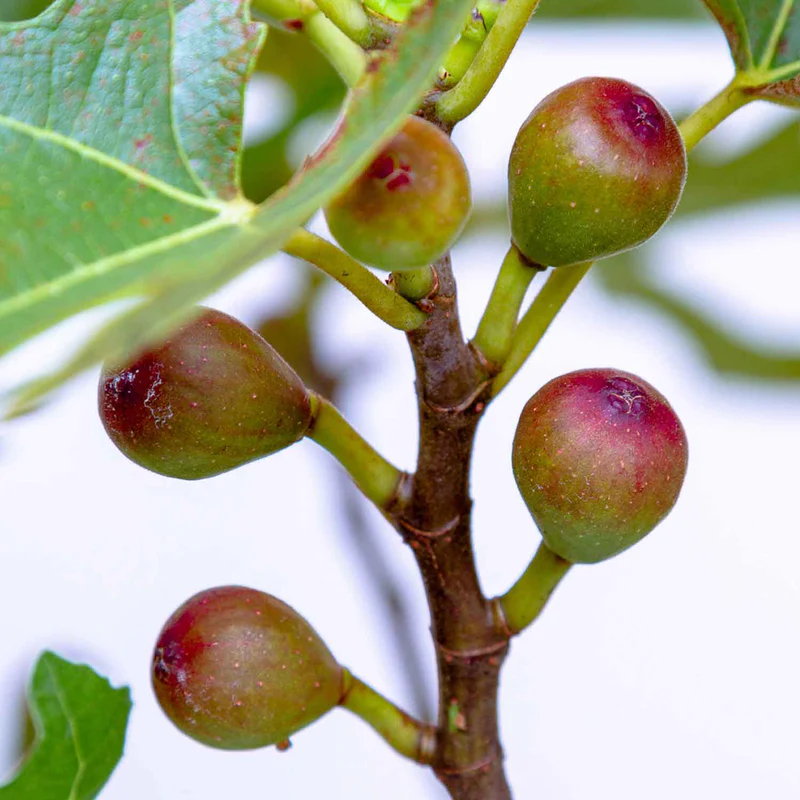If you’ve been searching for the perfect fig tree to plant in your garden, chances are you’ve come across the Smith Fig Tree. Whether you’re a beginner gardener or a seasoned plant enthusiast, the Smith Fig might just be the ideal addition to your backyard orchard.
There are thousands of fig kinds in existence, but figs like Smith are usually easy to find, cheap, and are a traditional fig variety that you should know like the back of your hand. But what makes this particular variety stand out? Let’s dive deep into the characteristics, benefits, care tips, and why you should consider adding this versatile fig tree to your garden.
What is the Smith Fig Tree?

Let’s start with a simple introduction before we get into the growing and care tips. The Smith Fig Tree is a variety of fig (Ficus carica), known for its sweet, delicious fruit and compact growth habit. It’s a popular choice for gardeners in the U.S. looking for a reliable, hardy fig tree that produces high-quality fruit.
According to the most reliable evidence ([1]) I have heard, Smith is originally from Croatia. The Becnel family picked it up in France and carried it to the United States after it somehow found its way there. Through their numerous nursery sales, they have made it a very popular fig in the South over the years, and many growers there rate it on par with Celeste or Brown Turkey.
It sounds like you’ve got a truly exceptional fig variety on your hands! The strong, acidic flavor and superb fruit quality you’re describing are definitely key traits that set it apart from other popular types like Celeste and Brown Turkey. It’s always exciting to find a variety that not only outperforms the others in taste but also delivers that “wow” factor in every bite.
Typically, this variety is admired for its adaptability, making it suitable for a variety of climates, especially those with a Mediterranean or temperate climate. Whether you’re growing it in-ground or in a container, the Smith Fig Tree can thrive and offer you bountiful harvests with the right care.
Why Choose the Smith Fig Tree?
You may be wondering: Why should I choose the Smith Fig Tree over other varieties? Here are a few reasons that make the Smith fig an attractive option:
-
Sweet and Delicious Fruit: One of the main reasons people choose the Smith fig is for its sweet and juicy figs. These figs are perfect for snacking, baking, or even drying. The flavor is a balanced mix of sweetness with a slight hint of honey.
-
Cold-Hardy: Unlike many other fig trees, the Smith Fig is relatively cold-hardy, which means it can grow in areas that experience cooler winters. This is a huge benefit for gardeners in the U.S. who live in regions with colder climates but still want to enjoy fresh figs.
-
Compact Size: The Smith Fig tree is not an enormous tree like some other fig varieties. Its compact size makes it a great option for small gardens, urban gardens, or even container gardening.
-
Disease-Resistant: Another major advantage is its resistance to common fig tree diseases such as fig rust and mosaic virus. This makes it a relatively low-maintenance option for those new to fig cultivation.
If you’re exploring different fig varieties for your garden, the Smith Fig Tree is just one of many great options. To learn more about the best fig varieties for your space, check out our comprehensive guide on popular figs that thrive in various climates.

How to Grow the Smith Fig Tree
Now that you know why the Smith Fig Tree is a great choice, let’s talk about how to grow it. Whether you’re planting it in the ground or a container, here are the essential steps:
1. Choosing the Right Location
The first step in growing a successful Smith fig tree is choosing the right spot. Figs prefer full sun, so pick a location where your tree will get at least 6-8 hours of sunlight per day. Ideally, the soil should be well-draining, slightly sandy, and rich in organic matter.
-
Soil pH: Smith figs thrive in slightly acidic to neutral soil (pH between 6.0 and 7.0).
-
Protection from Winds: If you’re planting in an area with strong winds, consider placing the tree near a wall or fence for protection, as strong winds can damage the delicate leaves and fruit.
2. Planting the Smith Fig Tree
Once you’ve chosen the perfect spot, it’s time to plant your tree. If you’re planting a bare root tree, dig a hole that’s twice the size of the root ball. Place the tree in the hole, ensuring that the roots are spread out and the top of the root ball is level with the surrounding soil. Gently fill the hole with soil, packing it down lightly to avoid air pockets.
-
Spacing: If you’re planting multiple trees, space them at least 10-15 feet apart to allow for proper air circulation and root development.
3. Watering and Fertilizing
After planting, water your fig tree deeply to help it establish strong roots. During the growing season, keep the soil consistently moist, but not waterlogged. As your tree matures, you can reduce watering frequency, as fig trees are relatively drought-tolerant.
For fertilizing, use a balanced, slow-release fertilizer in the spring. Avoid high-nitrogen fertilizers, as they can encourage excessive leaf growth at the expense of fruit production.
4. Pruning and Maintenance
To keep your Smith Fig tree healthy and productive, regular pruning is essential. Remove any dead, damaged, or diseased branches, and trim back any overly long or crowded branches to promote air circulation. Prune the tree in late winter or early spring before new growth begins.
Common Issues with the Smith Fig Tree
While the Smith Fig is a hardy and low-maintenance tree, like all plants, it can face a few challenges. Let’s go over some common problems and how to address them.
1. Fig Rust
One of the most common diseases that affect fig trees is fig rust, which can cause yellowing leaves and poor fruit production. To prevent fig rust, make sure your tree is planted in a location with good air circulation and avoid overhead watering, which can encourage fungal growth. If you notice signs of rust, remove affected leaves and treat the tree with a fungicide.
2. Fig Mosaic Virus

Fig mosaic virus causes distorted leaves and poor fruit development. While there’s no cure for the virus, you can prevent its spread by ensuring that your fig tree is healthy and free from aphids, which can transmit the virus.
3. Pests
Common pests like aphids, scale insects, and spider mites can occasionally infest fig trees. Regularly inspect your tree for signs of pests and treat with insecticidal soap or neem oil if necessary.
Can the Smith Fig Tree Grow in Cold Climates?
One of the main advantages of the Smith Fig tree is its cold hardiness. This makes it an excellent choice for gardeners in areas that experience mild winters, particularly in USDA hardiness zones 6-9. However, if you live in a colder region, you can still grow a Smith Fig tree by planting it in a container and bringing it indoors during the winter months. Container growing also helps protect the tree from pests and diseases.
While the Smith Fig Tree is relatively cold-hardy, it’s still important to take steps to protect your tree during the winter months. For essential tips on how to ensure your fig tree survives the cold, be sure to check out our article on.
Conclusion
The Smith Fig Tree is a fantastic choice for any gardener looking to grow figs in their backyard. With its sweet fruit, compact size, and resistance to diseases, it offers a rewarding gardening experience, especially for those in colder climates. By following the tips in this guide and providing the right care, you can enjoy fresh figs right from your own garden.
Whether you’re an experienced gardener or just starting out, the Smith Fig tree is a great option that combines beauty, productivity, and ease of care. So, why wait? Start planting your Smith Fig Tree today and enjoy delicious, homegrown figs for years to come!
Frequently Asked Questions (FAQs)
-
How long does it take for a Smith fig tree to bear fruit?
-
Smith fig trees typically begin to produce fruit in 2-3 years if grown from a nursery-grown tree.
-
-
Can Smith fig trees grow in pots or containers?
-
Yes! Smith fig trees adapt well to container growing, making them ideal for small gardens or patios.
-
-
What is the best time to plant a Smith fig tree in the U.S.?
-
Plant your Smith fig tree in early spring, after the last frost, for optimal growth.
-
-
How can I prevent my Smith fig tree from getting diseases?
-
Maintain good air circulation, avoid overhead watering, and prune regularly to reduce the risk of fungal infections like fig rust.
-
References:
-
-
- FigBoss. (2024). Smith Fig Tree: Everything You Need to Know. Retrieved December 13, 2024, from https://www.figboss.com/post/smith.
-
